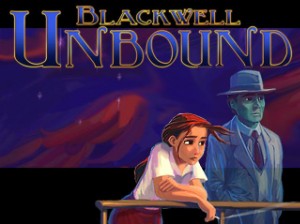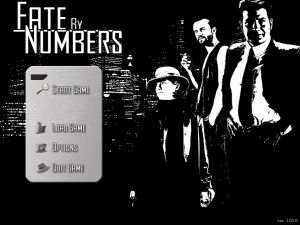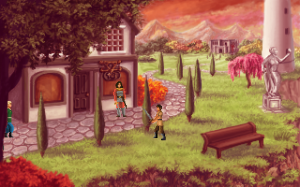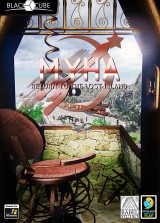Review for The Fall Trilogy: Chapter 2 - Reconstruction
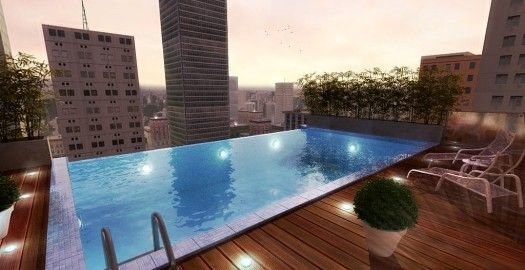
In the middle installment of The Fall Trilogy, a surreal series of casual games from Kheops Studio, Chapter 2 – Reconstruction leans more towards being a traditional adventure than its predecessor. The setting is entirely different too, though the premise remains the same: you've had a bad fall, woken up in a strange place and now have to figure out what's going on while trying to restore your memory. At the end of the Separation, the amnesiac hero fell from the ancient temple he was exploring into another mysterious location, here revealed to be the bottom floor of a modern day, hi-tech office building. As you ascend through the high rise, you'll once again have to solve many puzzles and collect various sets of items along the way, only with better puzzle integration and an improved difficulty balance this time around.
For anyone who hasn't played the first chapter or has forgotten what occurred, Reconstruction starts with a recap of what has transpired so far. The episodes are meant to be played in order, of course, but there’s really no reason why you couldn’t jump straight in here, as the only memories the hero has recovered so far are a few fragments about his wife and child, and the recap tells you everything you need to know. Before beginning to explore, there are a few brief tutorial tips to go through and a choice of whether to play in casual or adventure mode, the latter offering fewer helpful interactive sparkles, slower hint recharge times, and making the puzzles more challenging.
You soon discover that the office building belongs to a mysterious company known as Spoehk. After being told to avoid the security cameras by a mysterious stranger on the telephone, you must find a way to escape, hopefully figuring out what's going on and being reunited with your family in the process. Unfortunately, little more is revealed about your past in this game, so the story doesn't feel like it advanced as much as it could have. There are hints towards the ends as to what might be happening, but it's still hard to fathom exactly what the ultimate outcome will be.
While there are three areas to be explored in total, you’ll spend most of your time on one floor featuring a security room, an office, a lobby and a laboratory. There's plenty to investigate here, though the other two – a small corner of the parking garage and the roof – are brief and have far less to do in them. Obstacles include such tasks as finding a security pass, fixing the elevator, and disabling security cameras so you can wander freely around. These activities do a much better job of integrating the actual puzzles, like writing over a traced signature on a pad to unlock a door. One notable puzzle sequence requires placing a set of chemicals in a certain order according to a set of instructions, and several include cracking codes, which should appeal to logic puzzle fans and the mathematically-minded. I even enjoyed the slider puzzles, which were challenging enough to generate a sense of satisfaction when completed.
The difficulty of the puzzles is well balanced, beginning fairly straightforward but becoming more challenging towards the end. Even in adventure mode, however, there was nothing that kept me stuck for too long. There is one maze that is quite difficult to navigate, and in the end luck played a greater part in the solution than my ability to read the confusing map provided. If you are having problems, puzzles can always be skipped no matter which difficulty option you’ve chosen, though you’ll have to wait until the skip button is charged up.
There’s a better balance between puzzles and hidden object hunts this time too, which makes Reconstruction feel more like a lite-but-traditional adventure than Separation. It still contains its fair share of item collecting, but it feels more natural than the first game. Here you’re collecting reasonable items like tools in a maintenance room or electronic components, though it’s still disappointingly contrived when twenty objects appear out of nowhere just for the sake of gathering them. When these searches do come up, they are easier to complete and less tedious than in the previous game, and since they’re over fairly quickly you’ll soon be moving on to the more interesting tasks. If you do have trouble, the hint feature will highlight any item still left to be found.
Controlling the game is simple, with a smart cursor indicating places where you can travel or puzzles that can be interacted with. In certain areas you can pan around 360 degrees by holding down the right mouse button or using the arrow keys on the keyboard. This handles smoothly, and it's a shame there aren't more locations like this. Alternatively, the smooth-scrolling feature can be turned off completely if you prefer to change screens in static increments by clicking on directional arrows. The large bar at the bottom of the screen is home to a task list, which is useful if you’ve been away for a while and never leaves you guessing what do next. The inventory is located here as well, with all items constantly displayed. You can only collect items once the related task has been activated, and most times it's obvious which items need to be used and where. Often they have only one use, making the solutions very intuitive. There's no option to manually save your progress, as it’s automatically done when you exit the game. This seems a bit too restrictive, but really isn’t a big issue.
As in the first game, there is only really one main character, whose name is revealed to be John in this instalment. However, here you’re also introduced to a mysterious man who only contacts you by telephone and guides you to your goals. The only times you’ll hear other characters are in the brief flashbacks when John remembers something from his past. The voice acting is fine all around, and John's mellow tones convey the right amount of emotion and confusion when he remembers things, never becoming grating even when his comments are repeated. The music sets the mood well throughout, often featuring guitars and pianos with a relaxed feel but becoming more noticeable in dramatic moments.
Graphically it's hard to compare this game to Separation, as the setting is so completely different. Technically it’s just as polished, though the lush overgrown temple interior of the first game was beautiful to look at, while this time the sterile office building offers mainly white walls. That's not to say the game looks bad, as there’s an impressive view of a cityscape outside, but visually the location itself simply isn’t as inherently interesting. Most screens are static, but there are occasional animations like the water rippling in the roof pool. There are other graphical flourishes like sparkles around currently active puzzles, which feel a bit unnecessary but aren't too offensive.
The Fall Trilogy is not going to convert any casual game haters, but Reconstruction is a definite improvement over the first instalment and feels more like the traditional adventure games Kheops is best known for. There's a better balance between puzzles, exploring, and object gathering this time, and the hidden object tasks are easier and better integrated now. There’s a bit too much hand-holding on the casual setting, but playing in adventure mode is an enjoyable way to spend five or so hours, as the puzzles are generally challenging without being too difficult, and the hidden object tasks don't crop up so often that they bog down the pace. The story doesn't progress enough to be as rewarding as it could have been, but as the middle chapter of three, there’s still time for lingering questions to be answered. This episode works well as a sequel, as it's so different from the first game that it easily maintains interest, and I definitely want to find out what happens in the last instalment.


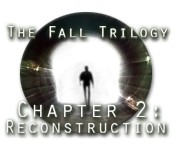
_capsule_fog__medium.png)






